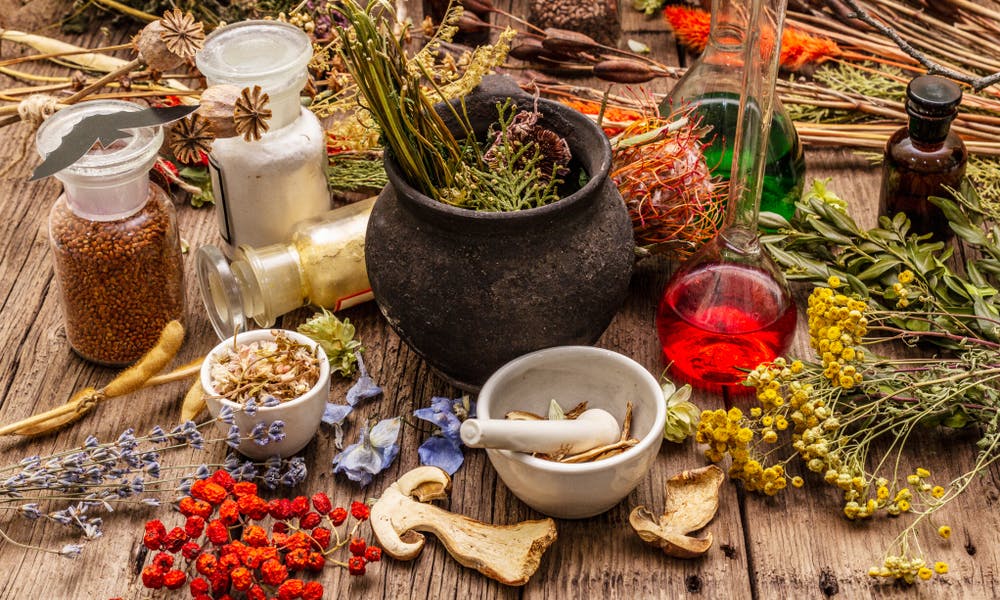Plants are organisms with many uses. They convert the sunlight into energy. They also produce oxygen to make it available to living organisms. In the forest and meadow, plant roots help hold the soil together and help enrich it with nutrients. Plants also help provide some of our energy needs. In some parts of the world, wood is the primary fuel used by people to cook their meals and heat their homes.
Above all of these, flowers are beautiful, and they enlighten our houses, offices, and streets. Moreover, we offer them to our dearest to send a message from the bottom of our hearts. In addition, plants are an important component of drugs, and some are classified as medicinal herbs that can sometimes replace medication thanks to their benefits on our health and practically no side effects if we use them wisely.
In this article, we are going to develop the following points:
* What Is a Medicinal Herb?
* What Is Phytotherapy?
* Aloe Vera and Mint Are Perfect Home Medicinal Herbs
* Other Examples of Popular Plants with Health Benefits
What Is a Medicinal Herb?
A medicinal plant is a plant used for its therapeutic properties that are beneficial to humans and even animals’ health. This means that at least one of its parts can be used for healing. Most often, it is not the plant as a whole, but different parts that may serve for different reasons: like the bulb, root, flower, petal, seed, etc…
Humans have used medicinal herbs for at least 7,000 years before our era. They are the basis of phytotherapy. Their effectiveness depends on their compounds with active ingredients that are very numerous and very varied depending on the species. Plants with medicinal properties can also have food or condiment uses or even serve for the preparation of a hygienic drink. The term “medicinal herb” or, more commonly, “plant drug,” therefore designates a natural raw material used in the manufacture of drugs.
What Is Phytotherapy
Phytotherapy means treatment based on plant extracts and natural active ingredients. In the West, it designates a set of remedies considered by the scientific community as unconventional treatments comprising, depending on the plants used, risks of toxicity, interaction with other drugs, or pollution by chemicals or heavy metals.
Efficient phytotherapy is based on the quality of the herb extract and its uses. For several years, many phytotherapy products are placed on the market, and under different galenic forms such as tablets, capsules, and fluids.
The quality of the plant plays a major role in this field; it should be rich with active ingredients and the plant must be fresh, dry, and coming from organic farming. In addition, a plant-based product must restore all the molecular complexity of the plant, which is at the origin of its therapeutic activity. Therefore, particular attention must be paid to the process used for the extraction of compounds.
Aloe Vera and Mint Are Perfect Home Medicinal Herbs
There are some plants that you can easily grow at home and their benefits are amazing with both a decorative touch and medicinal qualities. Aloe vera is a beautiful flower, known for its moisturizing and healing properties. It is also used in the food industry. To cultivate this plant at home, it is preferable to put it in a stoneware pot filled with earth and peat without forgetting to place a bed of gravel, which facilitates drainage. It is essential to expose it to direct sunlight and protect it from the cold in winter.
In addition, mint is a tonic with calming effects that you can have in your house. It is ideal for stomach pain. At any time of the year, you can get an earthen pot whose bottom is filled with gravel and put a mixture of peat and potting soil to grow your own mint. Mint prefers partial shade.
Other Examples of Popular Plants with Health Benefits
In our home, we can grow many flowers that have many utilities like parsley. It cleanses the kidneys, eliminates bad breath, and protects our immune system. To grow it, simply place the pot in the sun at least five hours a day. Its only drawback is that it grows slowly, so never forget to water it and take care of it even if you have the impression that the plant is not growing.
In addition, chamomile reduces anxiety and regulates heart problems. It is also used to make a delicious relaxing tea. We advise you to plant it in summer. Then store it in a place in the house where there is enough light.
The basilica is a natural antispasmodic that relieves daily stomach problems. It has anti-inflammatory properties. Placed on a balcony or indoors, this aromatic plant likes sunlight. It is very fragrant and it is used fresh and raw, just after cutting it.
Some plants can have both a decorative touch and healing properties. They can even replace or complete medical drugs. To treat your little pains, there are herbs with incredible virtues to grow at home and enjoy their benefits whenever need them. Associated or not with others, they might surprise you with their powers.
A plant is rarely used as a whole. Different parts of the same plant can have different uses like sapwood. With a little attention and by putting a little elbow grease in it, you get ingredients for infusions, concoctions, and balms that help relieve some mild pains. The consumption of certain plants for therapeutic use has been observed for ages. In addition, it has proved its efficiency in certain situations throughout the years of testing. However, you should not use herbs that science does not approve their effects because they might be toxic and may hurt you. Therefore, you must tread carefully while cultivating and using plants for medicinal reasons.
